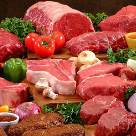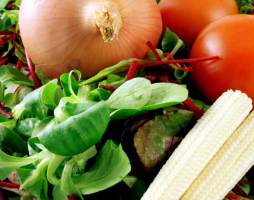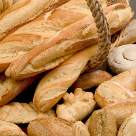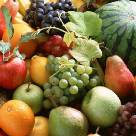Basic HTML Version





Classification of food groups
Each of the food groups is classified as:
plastic or forming foods; energy foods,
and regulating food. The first ones provi-
de essential substances for the formation
and conservation of our physical struc-
ture. Energy foods, as the name implies,
provide energy; regulating food are tho-
se that are essential for our metabolism
thanks to their vitamins, minerals and
fibres.
It is also important to take into account
the amount of energy in each of the food
groups. Carbohydrates should contribu-
te more than 55% of total energy value;
fats between 20 and 35%; and proteins
between 10 and 15%. It is also important
to consider the distribution of the energy
sources during the day. Breakfast should
contribute about 20% of the total energy
each day, a mid-morning snack about
10%, lunch about 30 to 35%, the after-
noon snack about 10 to 15% and dinner
between 25 and 30%.
in meat consumption. Overall, the number
of calories from animal origin has doubled in
Spain over the past few years.
These data are cause for concern since the
shift from the Mediterranean diet could be
one of the factors associated with higher
rates of obesity, cardiovascular diseases,
and diabetes.
A balanced diet
A balanced diet implies eating a variety of
foods adapted to our needs and personal
conditions. Eating a balanced diet does
not mean eating a large amount of food,
since quantity is just as important as quality.
Variety is the ideal approach from the stan-
dpoint of wellbeing, enabling us to enjoy a
wealth of flavours, tastes, smells, and aro-
mas. In fact, eating and drinking is part of
the joy of living and gastronomy is not in
any way in conflict with diet recommenda-
tions or healthy eating habits.
Food preparation should be simple: boiled,
grilled, steam, raw salads and stews.
Conclusion:
In short, if we follow the recommendations
in this guide we will be eating better and
will taking any unnecessary risks, all of
which will benefit our quality of life and our
current and future health. It will also help
us to learn more about food and make us
autonomous and responsible for our own
nutrition.
The Mediterranean diet available to us
every day in Spain is undoubtedly, a rich,
varied, and healthy eating habit.
Bibliography
http://www.seen.es
http://www.seedo.es
http://alimentos.org.es/
www.nutricion.org
http://www.mapfre.com/salud/es/cinfor-
mativo/piramide-de-la-alimentacion.shtml

